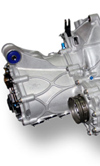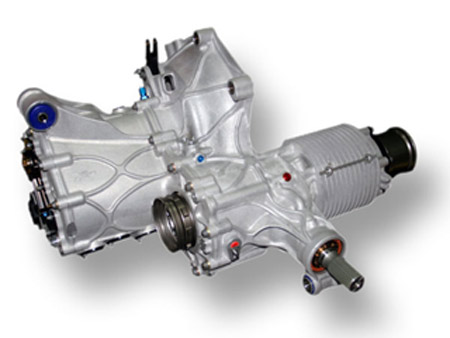WRC rally transmissions
 With the exception of off-road racers competing in events such as the Dakar Rally, it is unlikely that any type of competition vehicle is required to deal with as varied a range of conditions as a WRC rally car. Ten years or so ago, WRC cars were far removed from any other type of current rally machinery, but with introduction of new rules in 2006 and Super 2000-based regulations in 2011, the complexity of the designs manufacturers can employ has been greatly reduced.
With the exception of off-road racers competing in events such as the Dakar Rally, it is unlikely that any type of competition vehicle is required to deal with as varied a range of conditions as a WRC rally car. Ten years or so ago, WRC cars were far removed from any other type of current rally machinery, but with introduction of new rules in 2006 and Super 2000-based regulations in 2011, the complexity of the designs manufacturers can employ has been greatly reduced.
In relation to transmission design, this has meant the removal of a number of performance-enhancing components, notably the use of centre differentials on the prop shaft and, in 2006, a ban on active diffs. These regulations give designers far less scope for development, and have resulted in some fundamental changes in gearbox design.
In the previous generation of WRC cars, gearbox layout and location was an area where considerable performance could be gleaned. Thanks to the nature of most of the base cars used in WRC competition, a transverse engine and gearbox is the almost universal starting point. In the past, designers found benefit in rotating what was originally a transverse gearbox through 90º, when converting them to four-wheel-drive specification.
This put the gearbox and centre differential of the rally version's four-wheel-drive system in line with the car's longitudinal axis, which in turn simplified the drive to the rear differential. This approach also moved the mass of the gearbox further aft, a desirable trait for improve handling balance, and was a tactic adopted by most WRC contenders in the early 2000s.
However, this relocation brought the added complication of creating a transverse transfer case running across the back of the engine, adding both weight and packaging issues, for what was only a small improvement in handling balance. After some experimentation it was discovered that similar results could be achieved by using a regular transverse layout, a format adopted by all the current manufactures.

The introduction of the smaller, 1.6 litre forced-induction engines has also had a knock-on effect on gearbox design. The wide power band of the previous generation of 2.0 litre turbocharged engines meant only five gears were deemed necessary, with manufacturers even experimenting with four speeds. With the reduction in torque brought about by the smaller engine, the latest generation of WRC cars are exclusively six-speed.
As of 2006, active front and rear differentials, which used electronic control units to vary locking characteristics, were no longer allowed in competition, and this was followed by a ban on active centre diffs in 2010. The system now allowed consists of front and rear mechanical differentials, with a manually operated centre clutch to disengage the rear prop shaft (for use when the driver operates the handbrake to initiate turn-in).
Rule 5.2b of the regulations also bans the use of viscous or hybrid viscous-plate differentials, stating: "Mechanical limited-slip differential means any system which works purely mechanically, ie without the help of a hydraulic or electric system. A viscous clutch is not considered to be a mechanical system." The result of this ruling is that a car must be set up at a compromise for a rally distance, with differential settings capable of dealing with a wide range of surfaces.
Mechanical differentials are still adjustable by the drivers, but only to a limited extent. On most units the pre-load can be loosened or tightened manually between stages. But any more meaningful adjustments can only be made in the Service Park. There are rumours, however, that some teams have found ways of exploiting the central clutch to vary power distribution from front to rear, but no official comment has been forthcoming.
Overall, the regulatory changes introduced over the past five years have greatly simplified WRC transmission (and overall car) design, bringing it closer to that of other rallying classes. While there is some debate as to whether this has brought about real cost savings, it will undoubtedly pave the way to international competition for teams graduating from national level Super 2000 competition.
Fig. 1 - A current-generation six-speed sequential WRC gearbox, featuring an externally adjustable mechanical diff (Courtesy of Xtrac)
Written by Lawrence Butcher